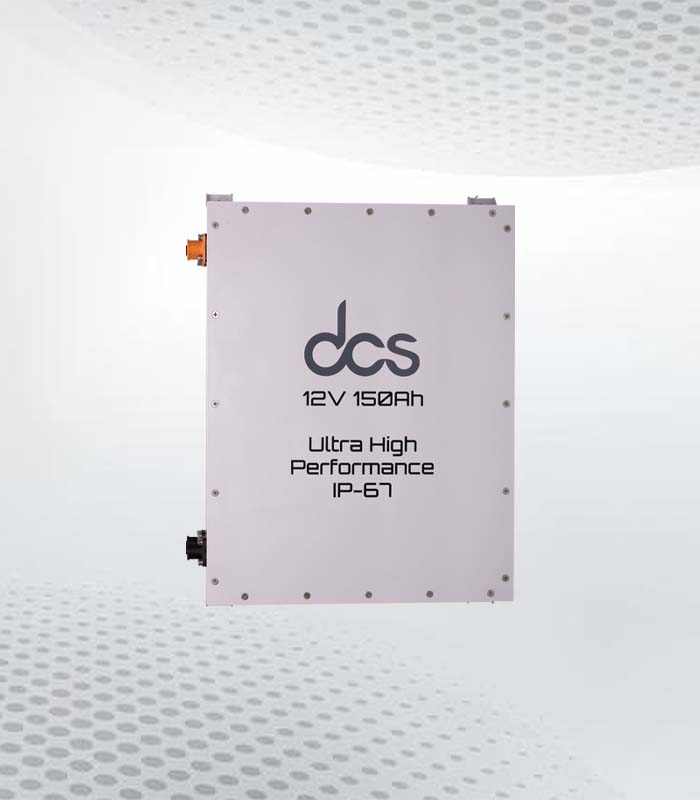As technology continues to evolve, the search for efficient and long-lasting energy storage solutions leads many to explore the benefits of lithium iron batteries . These robust batteries are gaining attention not only for their performance, but also for their impressive lifespan compared to traditional battery types. If you’ve ever wondered how these batteries compare to others or what factors contribute to their durability, you’ve come to the right place.
Lifespan comparison: How iron batteries compare to other types of batteries
Thanks to their remarkable lifespan, lithium-ion batteries are becoming a popular choice in a variety of applications. Compared to traditional lead-acid batteries, which typically last 3-5 years, lithium iron phosphate (LiFePO4) batteries can easily exceed a decade of use under optimal conditions. This longevity makes them especially attractive for renewable energy systems and electric vehicles.
Iron-based options often come out on top, even when compared to other lithium-ion variants such as lithium cobalt oxide or nickel manganese cobalt chemistries. Not only do they provide better thermal stability, but they also have lower degradation rates during charge cycles. This means users can expect reliable performance without frequent replacements.
The durability of lithium iron batteries goes beyond the numbers – they withstand temperature fluctuations and maintain their efficiency over time. Understanding how these batteries compare is critical to making informed decisions about energy storage technology as more people turn to sustainable energy solutions.
Factors that influence the durability of iron batteries: What affects longevity?
Several key factors significantly influence the durability of lithium iron batteries. Temperature plays a crucial role: extreme heat can accelerate degradation, while cold conditions can impair performance. Maintaining an optimal operating temperature helps ensure longevity and efficiency.
Another important factor is the quality of the materials used in the construction of the battery. Higher quality components improve overall performance and lifespan. Using lower quality materials can lead to faster wear, reducing the effectiveness of the battery.
Charging habits also affect durability. Periodic deep discharge or overcharging can stress cells and lead to premature failure. Following recommended charging practices ensures that each cycle stays within safe limits, promoting longer-lasting use of lithium-ion batteries.
Life cycle: How many charge cycles can an iron battery withstand?
The key aspect of lithium iron batteries is their cycle life, which defines how frequently they can be charged and discharged before their capacity decreases significantly. In general, these batteries have an impressive cycle life ranging from 2,000 to 7,000 cycles, depending on usage patterns and environmental conditions. This makes them an attractive option for applications requiring longevity.
The charge cycle refers to a full discharge followed by a full recharge. Manufacturers typically specify the expected cycle length based on standard conditions; however, real-world performance can vary widely depending on how you use the battery. Frequent deep discharges can shorten the battery’s lifespan compared to shallow discharges.
Understanding your specific needs will help you optimize the use of lithium iron batteries in various applications. By managing charging practices effectively and avoiding extreme discharge levels, users can maximize the number of viable charge cycles over time.
How extreme conditions affect the life of lithium iron phosphate batteries
Extreme conditions can significantly affect the lifespan of your lithium iron phosphate battery . High temperatures accelerate chemical reactions within the battery, leading to faster degradation. Prolonged exposure to heat can lead to thermal runaway, which reduces performance and safety.
Conversely, cold temperatures can hinder a LiFePO4 battery’s ability to charge and discharge effectively. Cold weather increases internal resistance, limiting power output during critical times. Sometimes, charging in cold conditions can cause lithium plates to form on the electrodes.
Humidity also affects battery longevity. Excessive humidity can cause corrosion and short circuits in cells. Keeping these batteries in controlled environments is essential to maintain their condition and prolong their lifespan in the face of various external factors.
Charging and Discharging Patterns: Best Practices to Maximize the Lifespan of Iron Batteries
Charging and discharging patterns play a critical role in lithium-ion battery longevity. To maximize durability, opt for shallow rather than deep discharge cycles. Keeping the charge between 20% and 80% helps maintain overall health, which prevents battery cells from becoming stressed.
When it comes to charging, a slow, steady charge is often the best option. Fast charging can generate excess heat, which can lead to faster degradation over time. Opting for a controlled charging rate will improve performance and extend lifespan.
Regular temperature monitoring during charging and discharging can also make a significant difference. Extreme temperatures, both high and low, can negatively affect the battery’s chemical composition. Creating an optimal environment ensures that lithium-ion batteries remain resilient throughout their entire use cycle.
Maintenance Tips: How to Extend the Life of Iron Battery
Keeping your lithium battery in top condition requires a few simple maintenance practices. Start by making sure it is kept at an optimal temperature. Extreme heat or cold can degrade performance. Keep the environment moderate to prolong its life.
Check connections and terminals periodically for signs of corrosion or dirt buildup. A clean connection ensures efficient power transfer, which reduces wear on the battery. Using protective covers can help prevent damage from dust and moisture.
When charging your battery, avoid discharging it too much before recharging. Frequent shallow discharges are less stressful than deep discharges, so you should keep the charge level between 20% and 80%. This habit not only improves longevity, but also improves overall performance.
The role of battery management systems (BMS) in improving the lifespan of iron batteries
Battery management systems (BMS) play a critical role in maintaining the health and longevity of lithium-ion batteries. These systems monitor key parameters such as voltage, current, temperature, and state of charge. By ensuring optimal operating conditions, BMSs help prevent overcharging or deep discharge, which can significantly shorten battery life.
Additionally, a BMS can balance the charge between individual cells within the battery pack. This cell balancing ensures that all cells reach their maximum capacity evenly. This is essential for maximizing performance and extending lifespan, as unbalanced cells can lead to premature failure.
Additionally, advanced BMS systems incorporate diagnostic features that help identify potential issues before they become serious problems. With the real-time data on battery health provided by these systems, users can make informed decisions about maintenance and usage patterns to extend the life of their lithium battery.
Impact of frequency of use: How regular use affects the durability of iron batteries
Regular use of a lithium-iron battery significantly affects its overall durability. When a battery is charged and discharged consistently, it can maintain optimal chemical reactions within the cells. This activity helps prevent the buildup of unwanted materials that could affect performance over time.
On the other hand, infrequent use can lead to degradation. If left unused for long periods, a lithium battery can enter a dormant state where internal resistance increases. This phenomenon reduces efficiency and capacity when you eventually decide to use it again.
Finding the right balance in frequency of use is critical. Regular cycle use prolongs life and keeps the battery ready for action when needed. Those who use their batteries frequently can enjoy greater longevity than those who leave them idle for long periods.
Storage Conditions: Recommended Practices to Extend Iron Battery Life When Not in Use
Temperature plays a crucial role when storing a lithium iron battery. Keep the environment cool and dry, with temperatures between 20°C and 25°C (68°F and 77°F). Extreme heat can cause capacity loss, while cold conditions can cause the battery to freeze or stop working.
Before storing the battery, make sure it is partially charged. A state of around 40% is optimal for long-term storage. Discharging it completely can cause damage from over-discharging, and charging it completely could stress the cells during inactivity.
Regular checks are also essential. Inspecting your battery every few months allows you to monitor its charge level and overall condition. If necessary, recharge it slightly to maintain that ideal storage percentage without risking degradation from prolonged inactivity.
Material Quality: How Different Iron Grades Affect Battery Longevity
The quality of the materials in lithium iron batteries is critical to their longevity. Higher-grade iron compounds, such as lithium iron phosphate (LiFePO4), provide better thermal stability and efficiency. This means they can withstand more charge cycles than lower-grade alternatives, significantly improving their lifespan.
On the contrary, quality can lead to faster degradation and better performance over time. Battery effectiveness is compromised when impurities or manufacturing processes lack precision. Lower quality materials often increase heat generation during operation, which accelerates wear.
Investing in high-quality lithium battery components increases durability and ensures that users get optimal performance from their energy storage solutions. Material choice directly influences the ability of these batteries to meet the most demanding applications while maintaining reliability throughout their lifespan.
Cycle depth: understanding the effect of deep and shallow discharges on iron battery life
Cycle depth significantly influences the lifespan of a lithium-iron battery. Deep discharges, where the battery is discharged to low levels before being recharged, can lead to faster degradation of internal components. This is especially true if done frequently, as it stresses the cells and reduces their overall capacity over time.
On the other hand, shallow discharges are generally healthier for lithium-iron batteries. Keeping charge levels between 20% and 80% allows for more cycles without compromising performance. This practice not only improves longevity, but also maintains efficiency during use.
Understanding how cycle depth affects battery health can help you optimize performance and extend battery life. By adopting shallow discharge habits, users can ensure they get the most out of their investment and enjoy reliable energy storage solutions.
How Lithium Phosphate Batteries Perform Under Various Environmental Conditions
Lithium phosphate batteries are renowned for their impressive performance in a variety of environmental conditions. Their stable chemistry allows them to operate effectively in both high and low temperatures. This stability translates into consistent efficiency, making them suitable for a variety of applications, from renewable energy systems to electric vehicles.
Cold weather can be a challenge for many types of batteries, but lithium iron phosphate batteries maintain good capacity even in frigid temperatures. While some of their competitors lose power significantly in such conditions, these batteries hold more charge and maintain longer run times.
On the other hand, extreme heat can also affect battery life. However, lithium iron phosphate technology is designed with robust thermal management capabilities that help mitigate the risks associated with overheating. This unique resilience makes them reliable options for demanding environments where other batteries may fail.
Conclusion
The longevity and durability of lithium iron batteries make them an attractive option for many applications. These batteries continue to evolve with technological advancements and display remarkable endurance and efficiency. Understanding the factors that influence their longevity can help users make informed decisions. From charging habits to environmental conditions, every aspect influences battery performance. Investing time in proper maintenance and care directly impacts lithium battery life.
Frequently Asked Questions
What is the average lifespan of a lithium iron battery?
Lithium iron batteries typically last between 5 and 15 years, depending on usage patterns and environmental factors. Because of their robust chemical composition, they typically last longer than many other types of batteries.
How can I maximize the life of my lithium battery?
Charge the battery optimally to increase its lifespan without overcharging or over-discharging it. Regular maintenance checks and compliance with recommended storage conditions also play a key role.
Are lithium-ion batteries safe in extreme temperatures?
These batteries perform well in moderate conditions, but can be affected by extreme heat or cold. For optimal performance, it is best to keep them within the temperature range specified by the manufacturer.
| Lists of related companies |
| Directory Submissions |
| Regional Directory |




